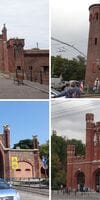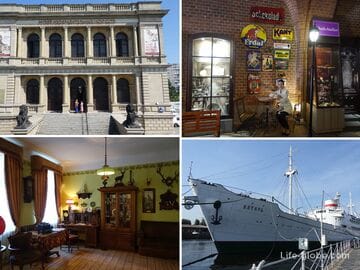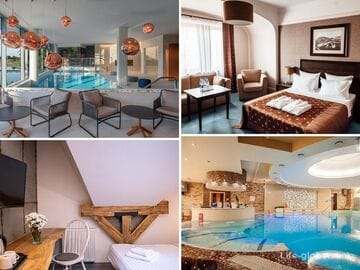The city of Kaliningrad, when it was still Konigsberg, was surrounded by defensive fortifications that formed a stone ring (belt) around the city. Then Konigsberg was a fortress city.
The fortifications consisted of two rings:
- the outer ring, which consisted of 15 forts: 12 main and three erected to strengthen the defense (intermediate fortifications - 1a, 2a and 5a), surrounding Konigsberg along a circular perimeter and being the first (external) defensive ring defense of the city;
- the inner ring (the Second fortification), the construction of which began in 1843, was located closer to the settlement and consisted of ramparts (an earthen embankment in the north of the city), ditches, defensive barracks and walls, bastions, Fort Friedrichsburg, defensive towers of the Dona and Wrangel, and the entrance gate to the city.
At the time of the construction of the Second val fortification, most of the city gates already existed. However, during the construction of the belt, during the modernization of the city fortifications, the gates were either rebuilt or significantly reconstructed and modernized.
According to its intended purpose, the city gates served until the beginning of the 20th century. The rapid development of military affairs in the 19th century led to the fact that by the end of the century the Second fortification could not protect the city from enemies. In 1910, all the gates were sold by the War Ministry to the city administration. At about the same time, part of the bypass structures (roller fortifications) was demolished to ensure the development of the sprawling city.
Initially, the city was surrounded by 10 gates, which were the only places of entry (entry) into the city and exit (exit) from the city. Ten gates bore the following names: Brandenburg, Railway, Ausfalian, Zackheim, Royal, Rosgarten, Friedland, Tragheim, Hollanderbaum and Steindamm.
Only 7 of the ten gates have survived to this day, these are: Brandenburg, Railway, Ausfalian, Zackheim, Royal, Rosgarten and Friedland.
Many sources also mistakenly refer to the gates of the city as the Friedrichsburg gate, which, in fact, was not a city gate and did not perform a direct function - entrance-exit to the city. What now exists, it was the gate that originally belonged to the fortress of Friedrichsburg, which was later transformed into a fort, became part of the Second Val fortifications of Konigsberg and performed a defensive function. Now the entrance gate of the fortress has been preserved as an architectural monument and is known as the Friedrichsburg Gate.
If we move away from the city gate as a direct entrance-exit to/ from the settlement and consider the gate as part of the historical defensive structures that have survived to the present day, then perhaps "Yes", the Friedrichsburg Gate can also be attributed to the historical gates of the city of Kaliningrad.
Many gates were damaged during the Second World War. Then there was the question of demolishing some of the gates, but thanks, among other things, to the efforts of local residents (already of the city of Kaliningrad), who were against the complete destruction of the history of Konigsberg, the gates were restored and now decorate the streets of the city and are among the top attractions of Kaliningrad.
Some gates now house museums, while others have commercial premises, cafes and art spaces.
Gates of Kaliningrad - Konigsberg
Brandenburg Gate
The Brandenburg Gate (German name Brandenburger Tor) is the only one of the gates still used for its intended purpose - the carriageway of Bagration Street passes through the gate.
The gates were built in Konigsberg in 1657 as part of the city's fortifications.
In 1843, during the work to strengthen the defense of the city, significant changes were made, as a result of which the Brandenburg Gate was almost rebuilt on the same site. Later, the gates were also subjected to reconstruction and restoration and maintenance work.
Now there is a marzipan shop-museum in the walls of the Brandenburg Gate.
The Brandenburg Gate is located at the end of Bagration Street, at the beginning of Suvorov Street, within walking distance from the Southern Railway Station. Learn more about the Brandenburg Gate...
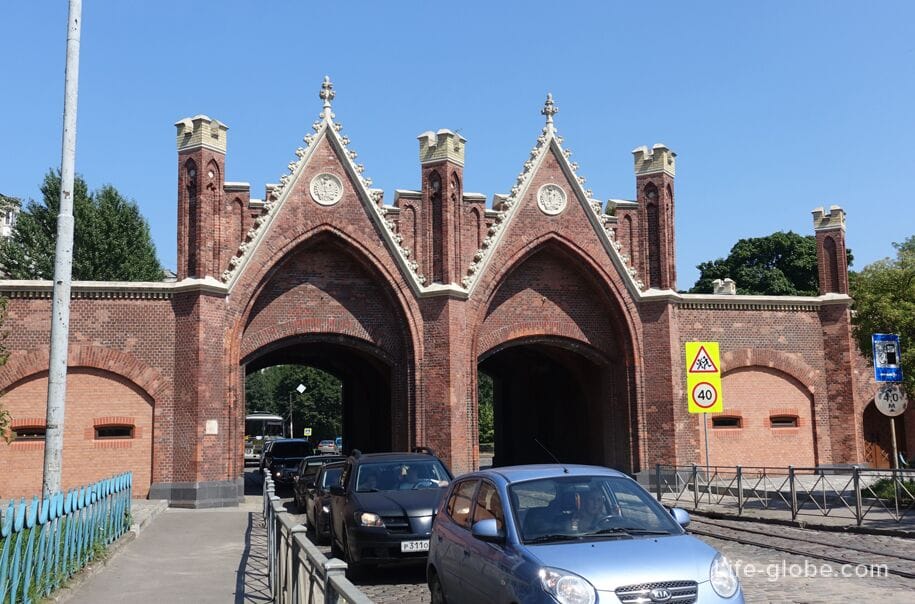
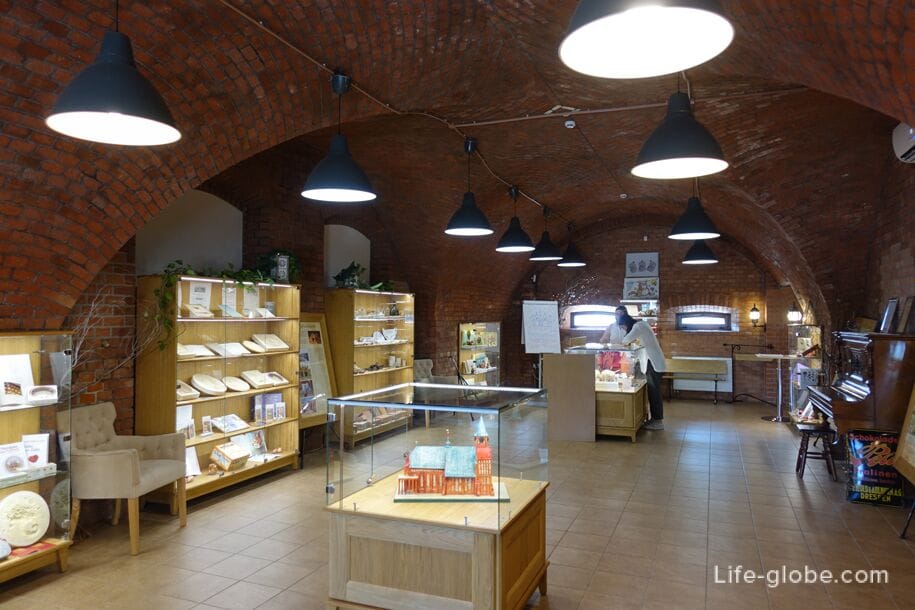
Friedland Gate
Friedland Gate, German name Friedländer Tor.
The exact date of construction of the gate is unknown, approximately 1857 - 1862(65) years.
The gates are built of red ceramic bricks in the Neo-Gothic style. The facade has a decorative design, including sandstone sculptures made by the Berlin sculptor V.L. Sturmer.
Currently, the museum "Friedland Gate" is located in the walls of the gate. Near the gate there is a partially preserved bastion "Pregel".
The gate is located at the intersection of Kalinin Avenue and Dzerzhinsky Street, adjacent to the Yuzhny Park.
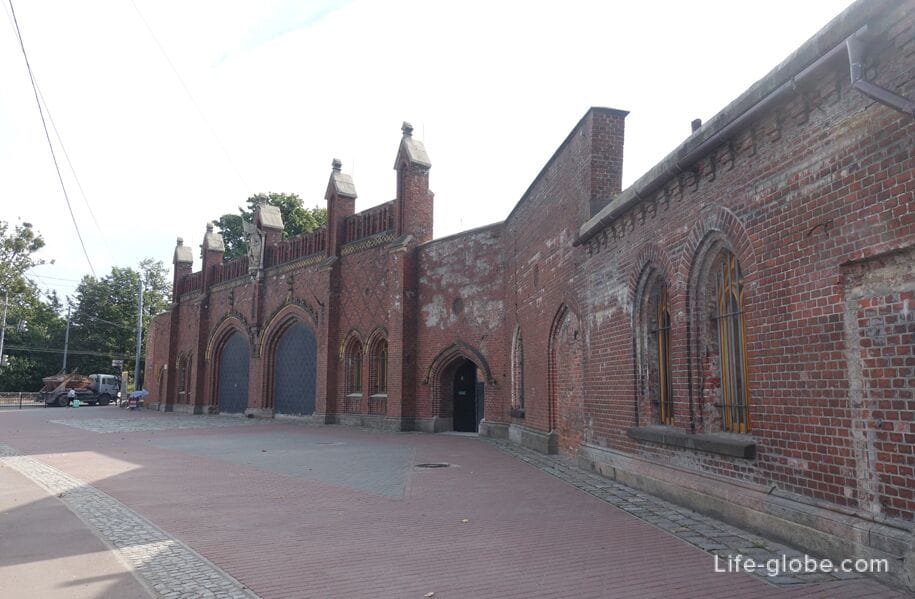
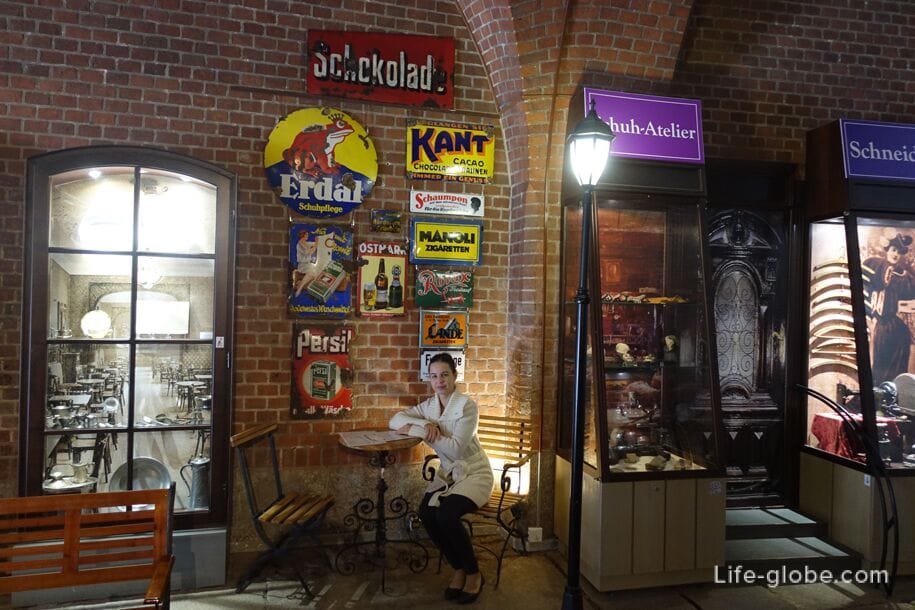
The Royal Gate
The Royal Gate (German name Königstor Tor, English - King's Gate) is now one of the most interesting gates of the city and one of the objects of the recommended route "Kaliningrad fortification".
The laying of the Royal Gate took place in August 1843 with the participation of nobles and the King of Prussia Friedrich Wilhelm IV. The construction was completed in 1850.
The Royal Gate was built on the site of the old gate, demolished in the first half of the 19th century during the modernization of the city fortifications.
The gate is made of red brick in a pronounced Neo-Gothic style.
The museum - Historical and Cultural Center "The Great Embassy" is located in the Royal Gate.
The Royal Gate is located at the intersection of Frunze Street/Yuri Gagarin and the Lithuanian Shaft in Kaliningrad.
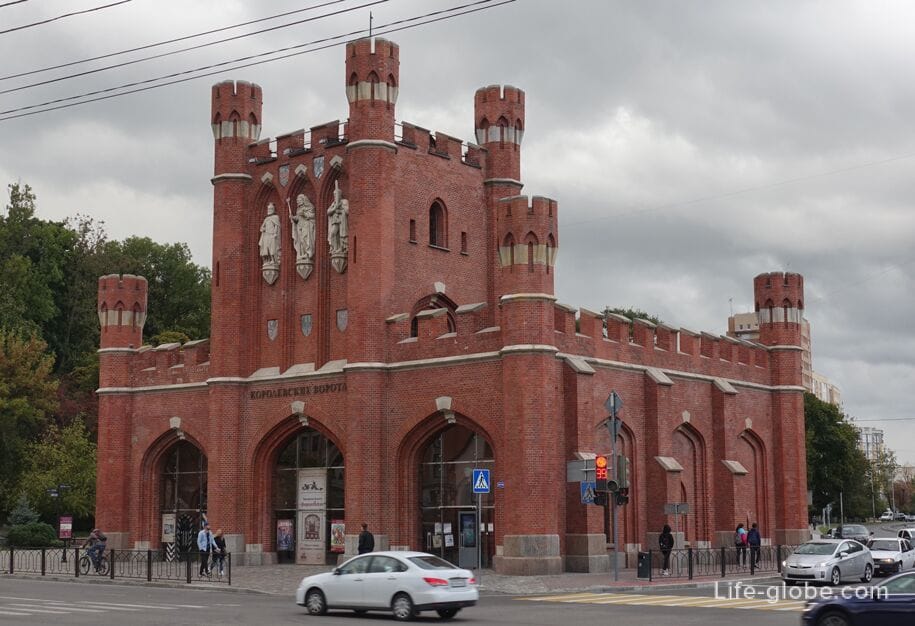
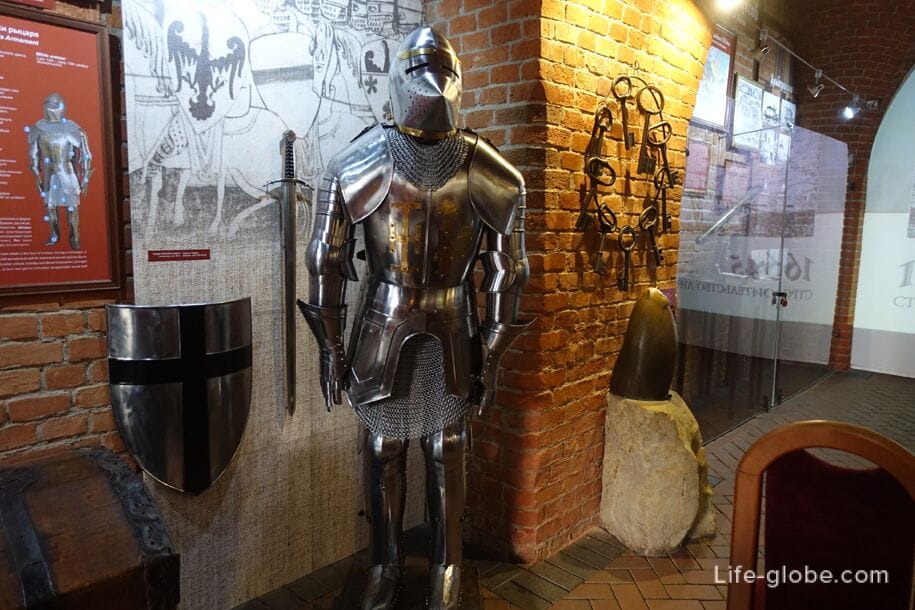
The Zackheim Gate
Zackheim Gate (German name Sackheimer Tor, English - Sackheim Gate)
Originally, the Zackheim Gate was an integral part of the First fortification of Koenigsberg, built in the early 17th century.
In 1860-1865, the gate was rebuilt according to the project of Ernst Ludwig von Aster.
The Zackheim Gate was probably the simplest of all the city gates of Koenigberg. They are made in the Neo-Gothic style, from the side of the city they were decorated with high reliefs of heroes of the Napoleonic Wars Johann David Ludwig York and Friedrich Wilhelm Bulow, from the outside - the image of a Black Eagle. The Order of the Black Eagle was considered the highest award of the Kingdom of Prussia.
Currently, there is a coffee shop and an art space "Gate" in the Sackheim Gate, where exhibitions and various events are held.
The Zakheim Gate is located near the Royal Gate, at the address: Litovsky Val Street, 61 (intersection with Moskovsky Prospekt). Learn more about the Sackheim Gate...
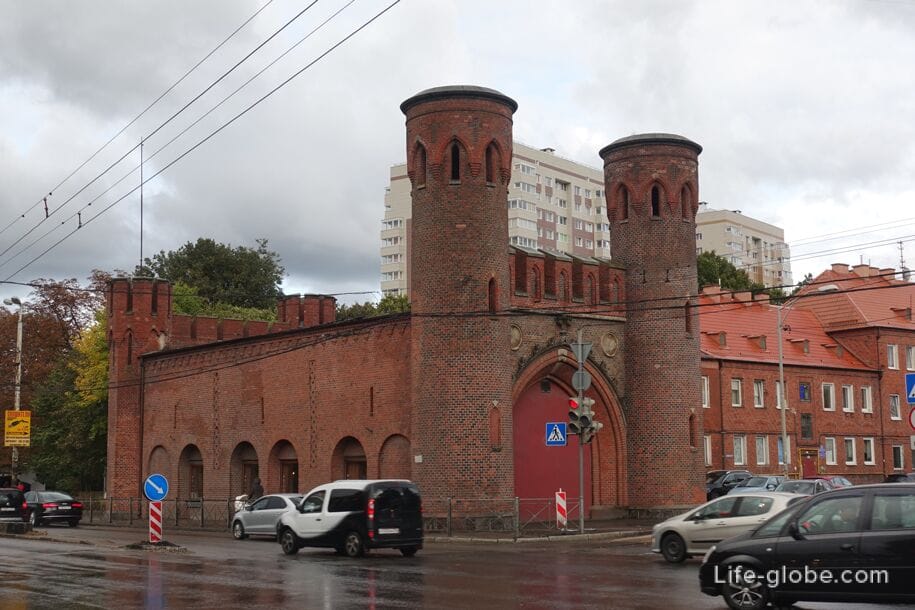
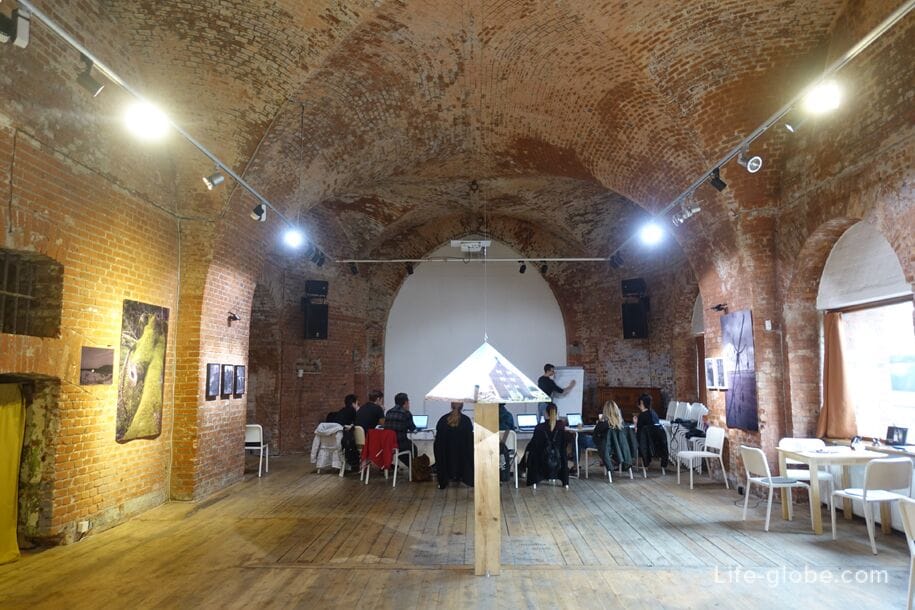
Rosgarten Gate
Rosgarten or Rossgarten Gate, also known as Rossgarten Gate (Rosgartenskie vorota, German name Roßgärter Tor).
These gates replaced the previous version of the gate of the early 17th century.
The Rosgarten Gate, which has survived to this day, was built between 1852 and 1855 under the direction of Wilhelm Ludwig Sturmer.
Next to the Rosgarten Gate was the Dona Tower (now the Amber Museum is located in the tower). Both buildings were connected by a defensive wall and formed a single architectural ensemble, part of which can still be seen today.
Currently, there is a cafe-restaurant "Sunny Stone" in the gate.
The Rosgarten Gate is located at the intersection of Chernyakhovsky and Alexander Nevsky Streets, next to Vasilevsky Square. Learn more about the Rosgarten Gate...

Railway gates
The railway gate (German name Eisenbahnhof Tor, English - Railway Gate (on the way to Pillau) was built in 1866-1869 by architect Ludwig von Aster.
The railway leading to Pillau (now the city of Baltiysk) passed through the gate.
The railway gates have two spans decorated with pointed arches. The southern span was built in 1866, and the northern one in 1889. Evidence of this is the stones located above the arches of the gate. On the sides of the arches were casemates with embrasures.
In the post-war years, the railway line passing through the gate was not used, the rails were removed in the late 1990s.
Currently , the gates are:
- Kaliningrad Planetarium named after F.V. Bessel;
- exhibition of historical miniatures "Parade of Tin Soldiers", including: miniature sculptures and reconstructions of historical battles of different eras.
The railway gates are located at the address: 51A Guards Avenue. On the west side of the gate adjoins the Victory Park, and on the east - to the Guards Avenue. Learn more about Railway Gates...
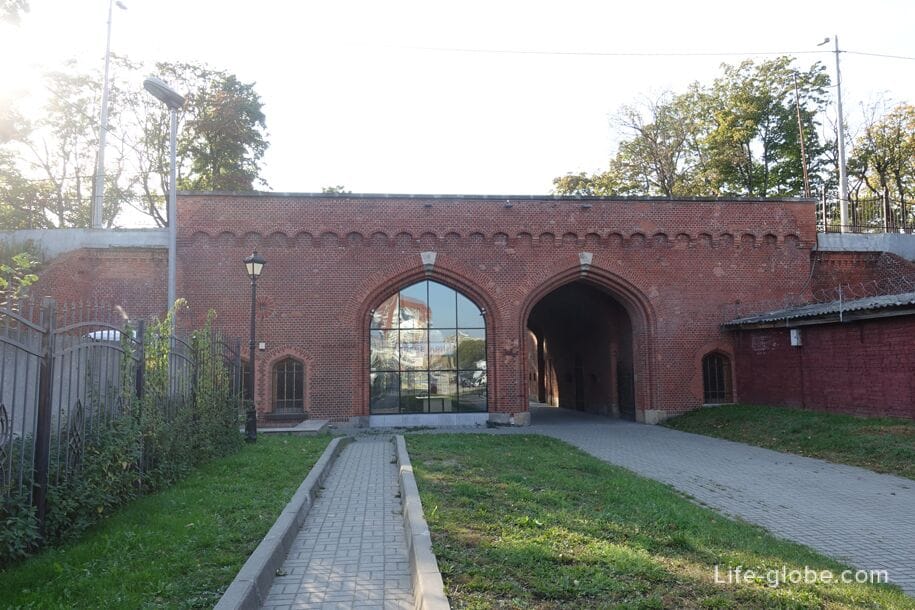

The Ausfalian Gate
The Ausfalian Gate (German name Ausfalstor Tor, English - Ausfaler Gate) was built approximately in 1626, during the construction of the First defensive belt around the city.
In 1866, the gate was rebuilt according to the project of architect Ludwig von Aster for the construction of the Second wall fortification of the city.
The gate, built in the style of brick Gothic, was pedestrian. Initially, they crashed into the shaft and were below ground level, had one passage (tunnel), to which a ladder and a bridge led from the outside, and a combat platform with a crenellated parapet was located above the passage. Casemates with embrasures of frontal and flanking fire were located on the sides of the passage.
In 1993-95, the Orthodox chapel of St. George the Victorious was built on the upper platform of the Ausfalsky Gate, designed for combat, located at the level of the roadway of the Guards Avenue.
Currently, what remains of the Ausfalsky Gate can be seen below the level of the streets of Field Marshal Rumyantsev and Guards Avenue. Near the gate there is a preserved reduit of the "Astronomical" bastion. Learn more about the Ausfalian Gate...
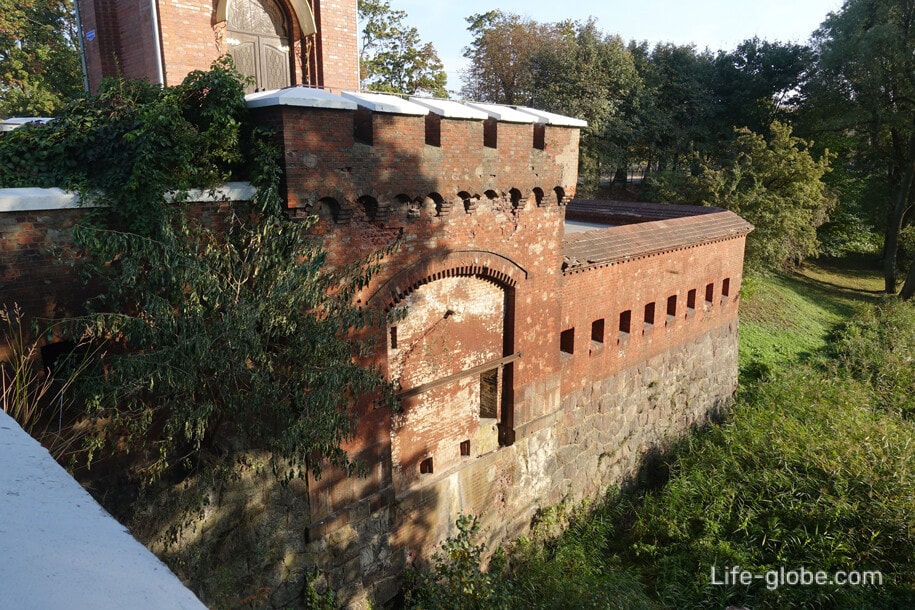
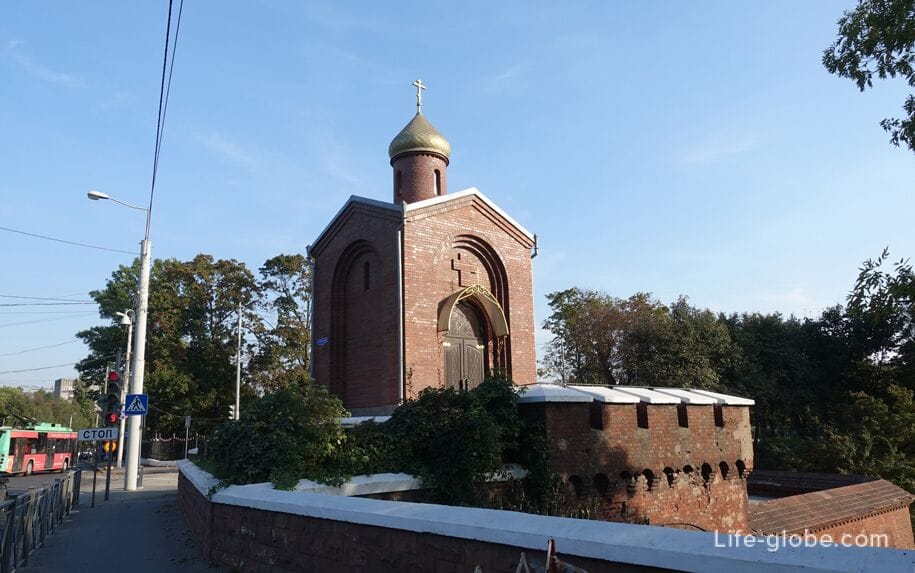
Friedrichsburg Fortress (Friedrichsburg Gate)
Friedrichsburg Fortress (later fort, now restored gate with museum exhibits) is a fortress that existed in Konigsberg and was part of the defensive fortifications of the city.
The construction of the Friedrichsburg Fortress as a citadel began in 1657. The fortress project was developed by the Prussian engineer and mathematician Christian Otter, who invented the Dutch system of building fortresses, the peculiarity of which was to surround the structure with a wide water moat.
In 1852-1858, the Friedrichsburg fortress was reconstructed into a fort of the same name (Fort Friedrichsburg / Fort Friedrichsburg or Feste Friedrichsburg), which became part of the Second Val Fortifications of Konigsberg. During the reconstruction, a brick gate was erected in Fort Friedrichsburg. The author of the gate project was August Stuhler, the court architect of the Prussian King Frederick William IV.
After the liquidation of the fort in 1916, auxiliary railway tracks were laid on its territory. By the decision of the Mayor of Konigsberg, the entrance gate of the fortress was preserved as an architectural monument, after which they also became known as the Friedrichsburg Gate.
By 1939, a two-story building was added to the north side of the Friedrichsburg Gate, and they themselves were used as the office of the freight station of the Imperial Railway.
In March 2007, the emergency Friedrichsburg Gate was transferred to the Museum of the World Ocean.
On May 27, 2011, the historical and cultural center "Ship Resurrection" was opened in the renovated premises of the gate and on the adjacent territory, which functions as a museum to this day.
The address of the gates of the Friedrichsburg fortress: 39 Portovaya Street, on the south side of the Pregolya River, near the Two-tier Bridge and the Peter the Great Embankment.
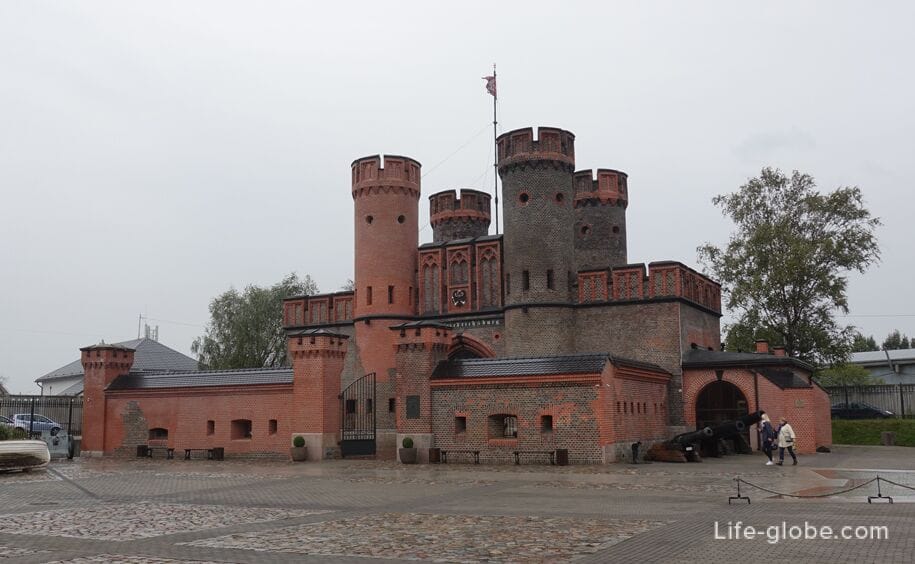
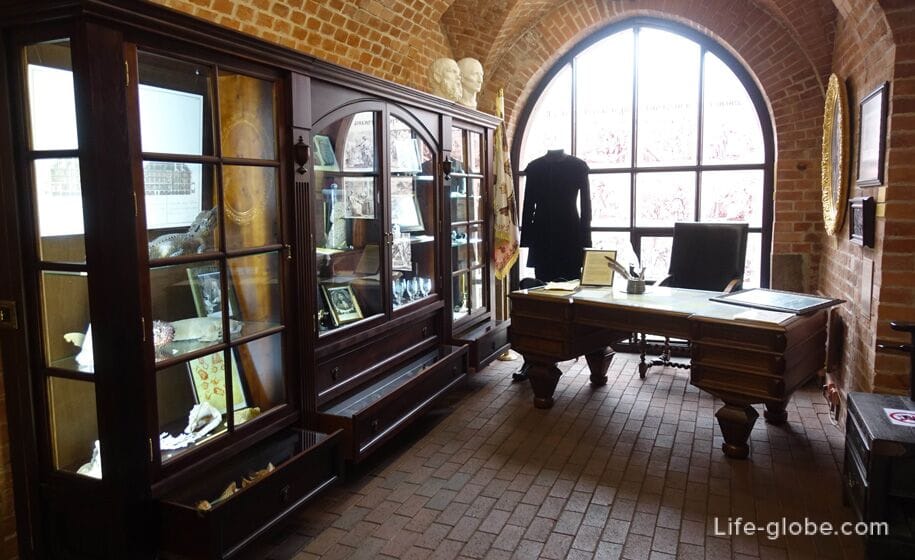
The gate, which now does not exist
The Tragheim Gate (Tragheimer Tor) was small and did not have much significance. They have been mentioned since 1785. They were demolished in 1910.
The gates were located in the area of the current Gorky Street and Hansa Platz (now Victory Square is the central square of Kaliningrad).

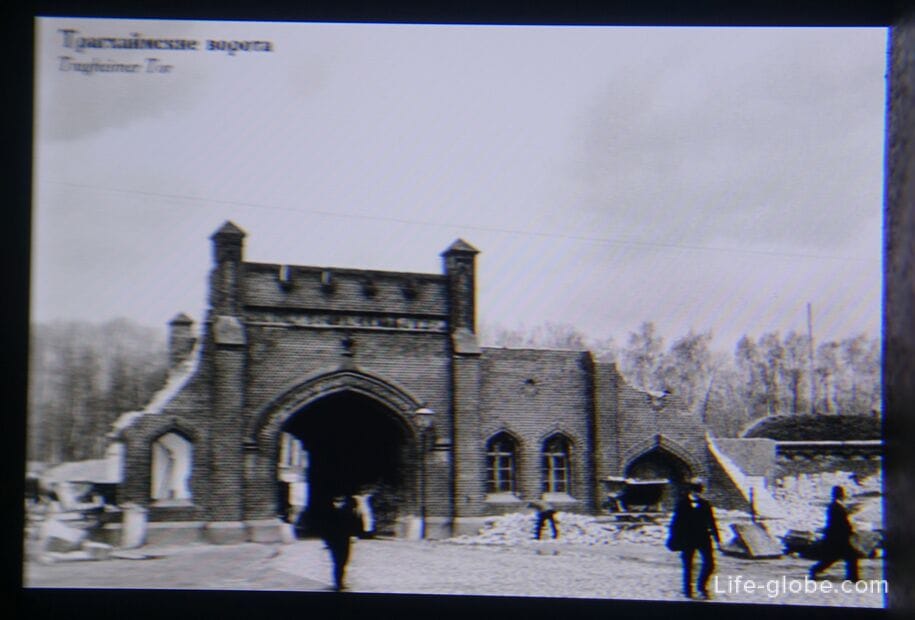
The Steindammer Gate (Steindammer Tor) is mentioned as early as 1630.
At the gate there were two wide passages for transport and two smaller ones for pedestrians. On the inside there was a statue of Frederick William IV. They were demolished in 1912.
They were located near the current Victory Square, presumably on the site of the Europa shopping center.
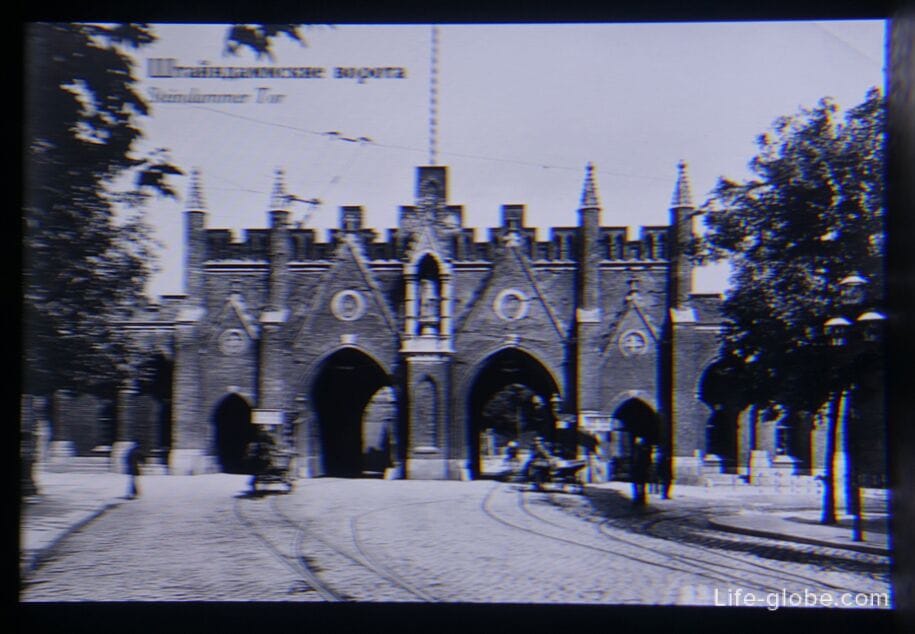
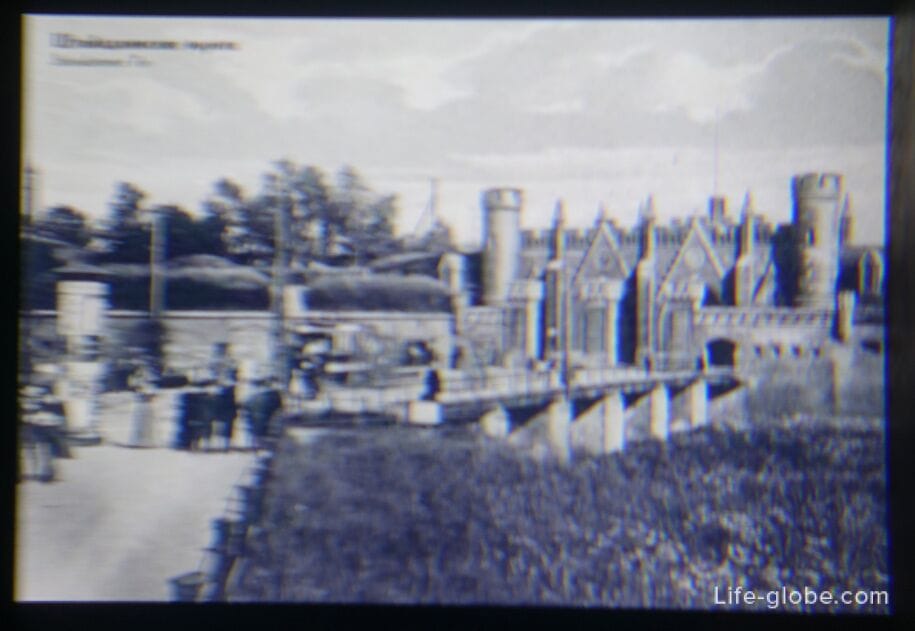
The Hollenderbaum Gate was located near the intersection of the current streets of General Butkov and Marshal Baghramyan, next to the Two-tier Bridge over the Pregolya River. There was a railway station of the same name next to the gate.
The gate was named after the area in which it was located (Hollenderbaum, which means "Dutch tree").
They were demolished at the beginning of the 20th century.




